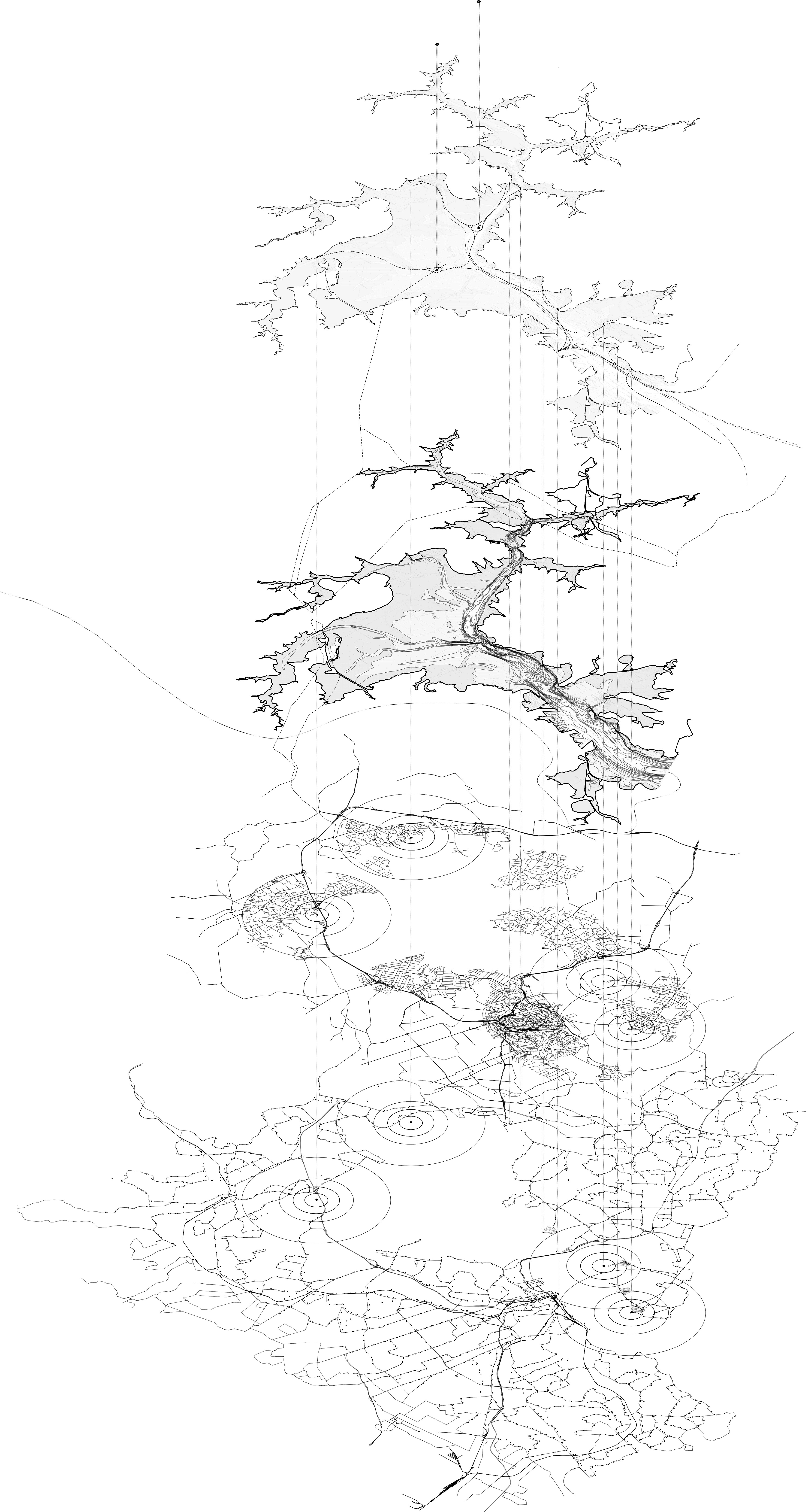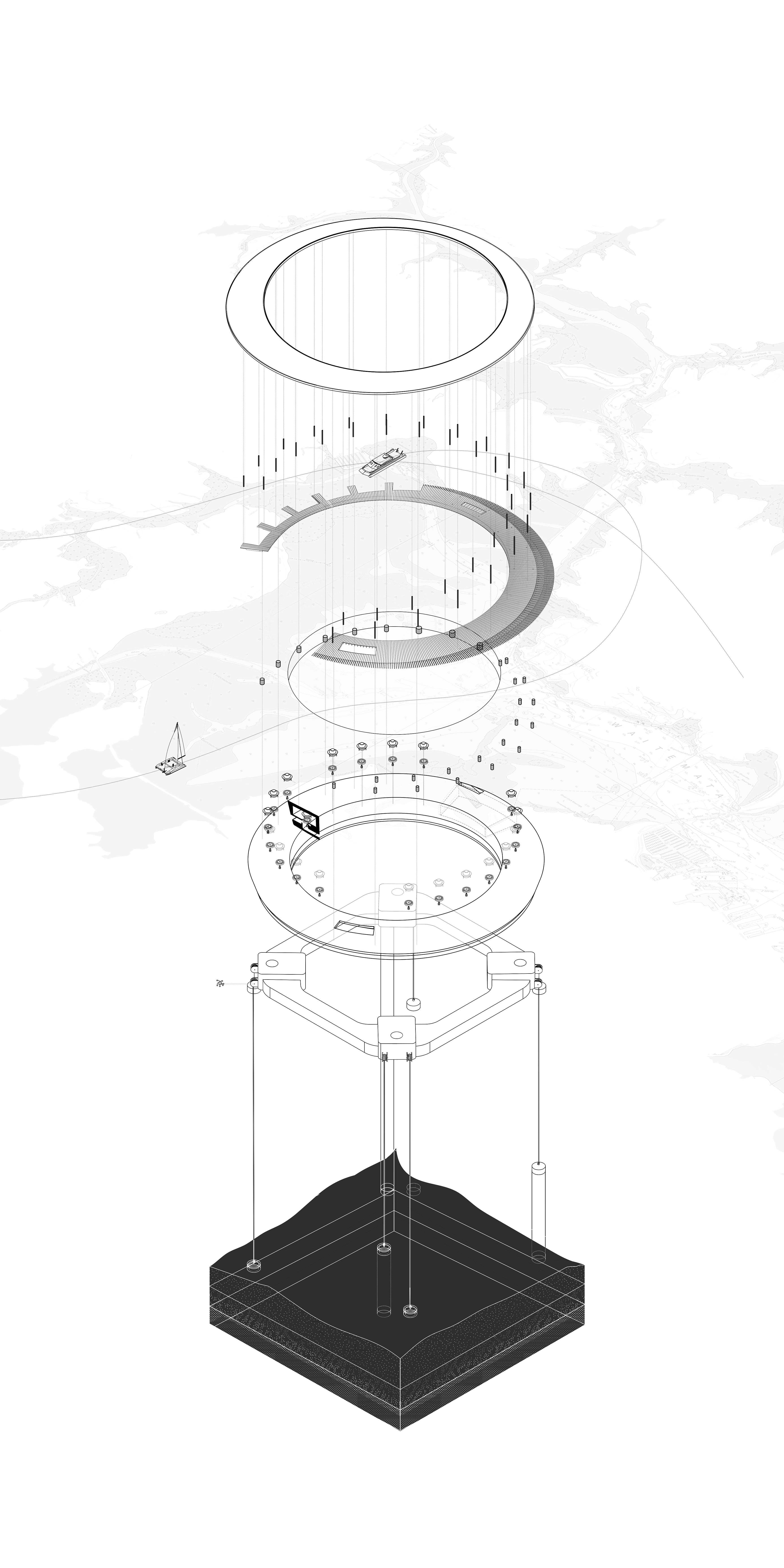
This project calls for a shift in focus from land to water as fertile grounds upon which to catalyze systemic change within Auckland’s overburdened transportation systems. In contrast to a rigid, immobile land-based transit system, the harbor provides an opportunity to support a flexible, malleable, and responsive transportation network.
Fall 2017
Advanced Studio
Critic
Peggy Deamer
Advanced Studio
Critic
Peggy Deamer
Since the city’s founding in 1840, the Waitemata Harbor has been central to the city’s development: it is the site of New Zealand’s most important cruise and container ship port, through which most goods flow, and it is central to sporting, culture, and entertainment in “The City of Sails.” Its potential remains untapped as the backdrop to the ferry system, however.
The harbour is seen more as a barrier or impediment –– something to drive across or around –– rather than the grounds for a new mobility system. But, in contrast to a rigid land-based transportation systems prone to congestion and riddled with choke-points, the harbor, and the water more precisely, provides an opportunity to support a flexible, malleable, responsive transportation system which can link together the rapidly growing communities around the harbour.
Change starts by rethinking the current CBD-centric hub-and-spoke model of service (which over-privileges the importance of the area in the average Aucklander’s commute) and transforming it into a distributed, polycentric network, making the ferry system more capable of accommodating the uneven population growth in the region. This move satisfies a particularly pressing need for expanded service to the communities in the West Harbor region where population is increasing at rates that repeatedly exceed state projections. The four local boards highlighted are expected to have some of the highest growth rates in the region over the next 30 years, with ferry traffic expected to increase commensurate with the general population rise.
The harbour is seen more as a barrier or impediment –– something to drive across or around –– rather than the grounds for a new mobility system. But, in contrast to a rigid land-based transportation systems prone to congestion and riddled with choke-points, the harbor, and the water more precisely, provides an opportunity to support a flexible, malleable, responsive transportation system which can link together the rapidly growing communities around the harbour.
Change starts by rethinking the current CBD-centric hub-and-spoke model of service (which over-privileges the importance of the area in the average Aucklander’s commute) and transforming it into a distributed, polycentric network, making the ferry system more capable of accommodating the uneven population growth in the region. This move satisfies a particularly pressing need for expanded service to the communities in the West Harbor region where population is increasing at rates that repeatedly exceed state projections. The four local boards highlighted are expected to have some of the highest growth rates in the region over the next 30 years, with ferry traffic expected to increase commensurate with the general population rise.

A new ferry system calls for new ferry terminals, and I’m proposing two types of ferry stations that work in tandem with one another: first, a water-bound station, and second, an edge-bound ferry station, both of which support a new fleet of smaller, shallow draft, electric ferry boats. To begin with the water-bound model, these strategically located stops add nodes in the system and provide more flexible transit and destination options in the West Harbour. These stations function like floating dams, generating their own electricity through an induced water pressure gradient change, which is then stored in the batteries which power the ferries. The system is thus independent of the nation’s fragile electrical grid and taps into a wider kiwi trend towards capitalizing on its rich hydrological resources.
The water-bound stations of course function in tandem with the edge-bound stations that make the connection between sea and land transit modes. Linkage to a robust system of land-based transportation is critical to the success of any ferry system, and in the best case scenario provides an attractive and viable alternative to the car, which has caused numerous urban ills in Auckland. In Seattle, ferries are so integral to transportation that they are considered part of the interstate system. Auckland is positioned and primed to follow suit. This sort of thinking can benefit Auckland greatly.
So these edge stations can be intermodal transit points that are ultimately not just for passengers but for these batteries as well. These are intermodal hubs for people to change transit modes from one to the next, but also local distribution hubs for these energy parcels people can take and exchange. These are sites which also harness the power of the harbour, using deep turbine generators to power its own set of batteries. Batteries aimed at local households; battery pickup becomes part of the daily commute, set of tasks like picking up a coffee and a muffin on your way to work. helping to ease an aging fragile electric grid and flattening peaks in energy usage of the course of the day. Battery storage is the future. Something attractive NZ is looking to to help flatten the energy production and consumption curve over the course of the day.
The water-bound stations of course function in tandem with the edge-bound stations that make the connection between sea and land transit modes. Linkage to a robust system of land-based transportation is critical to the success of any ferry system, and in the best case scenario provides an attractive and viable alternative to the car, which has caused numerous urban ills in Auckland. In Seattle, ferries are so integral to transportation that they are considered part of the interstate system. Auckland is positioned and primed to follow suit. This sort of thinking can benefit Auckland greatly.
So these edge stations can be intermodal transit points that are ultimately not just for passengers but for these batteries as well. These are intermodal hubs for people to change transit modes from one to the next, but also local distribution hubs for these energy parcels people can take and exchange. These are sites which also harness the power of the harbour, using deep turbine generators to power its own set of batteries. Batteries aimed at local households; battery pickup becomes part of the daily commute, set of tasks like picking up a coffee and a muffin on your way to work. helping to ease an aging fragile electric grid and flattening peaks in energy usage of the course of the day. Battery storage is the future. Something attractive NZ is looking to to help flatten the energy production and consumption curve over the course of the day.


